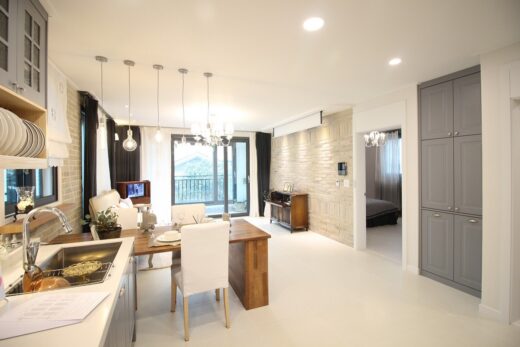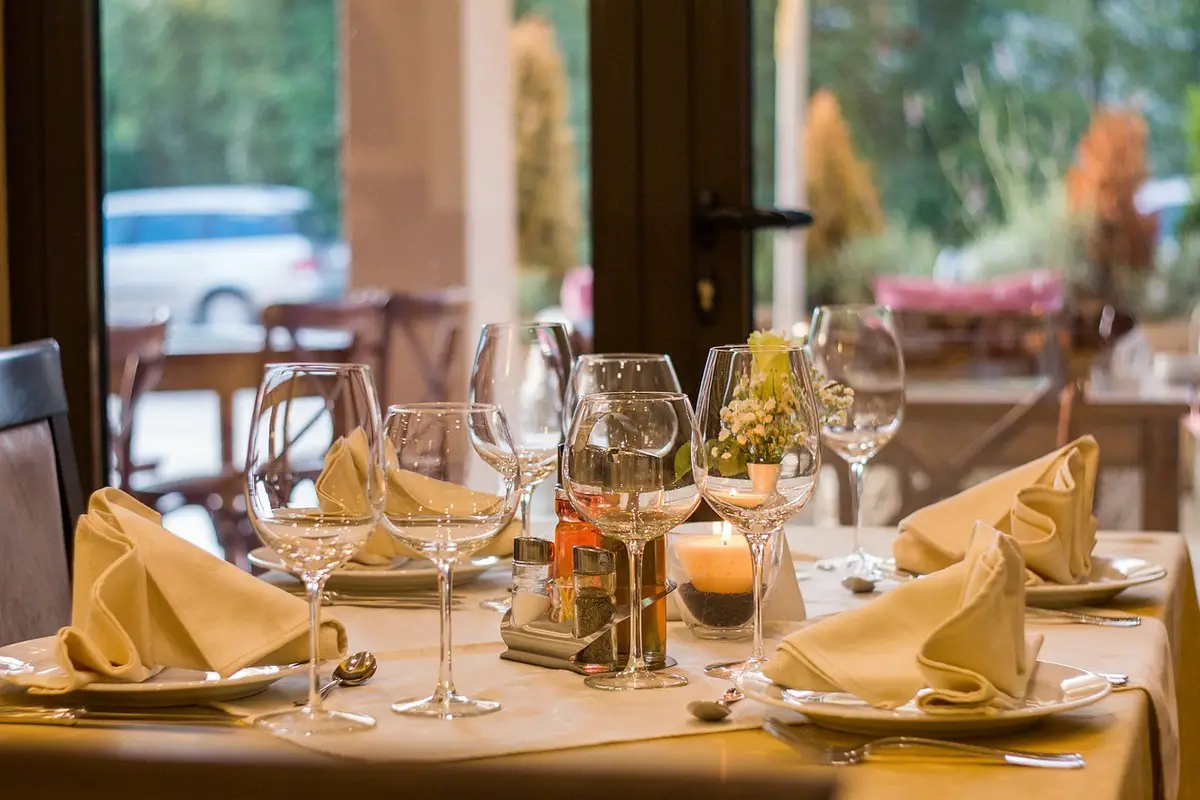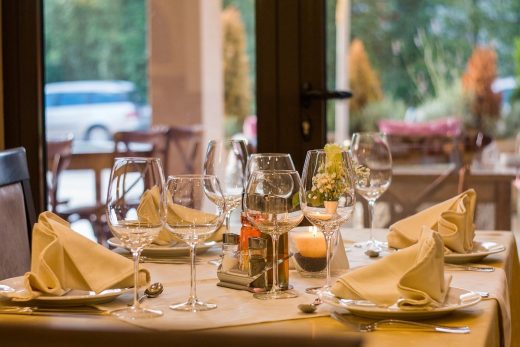Emerging architectural trends in restaurants, guide, Light trend advice, Property interior design style
Emerging Architectural Trends in Restaurants
29 April 2024
In an increasingly competitive landscape, restaurants are continually seeking new ways to attract and retain customers, not just through their menus but also through architectural innovations.
The design and ambiance of a restaurant play a crucial role in its appeal, influencing customer perceptions and experiences even before they taste the food. This article explores how restaurants are leveraging architectural elements to create inviting spaces, enhance customer experiences, and stand out in a crowded market.
Emphasizing Outdoor Features
One significant trend in restaurant design is the enhanced focus on outdoor features. Spaces that were once considered peripheral are now at the forefront of design considerations. Among these features, propane fire pits have become particularly popular, transforming outdoor seating areas into cozy, inviting spaces that appeal to customers year-round. These fire pits not only provide warmth, making the outdoor dining experience comfortable even in cooler weather, but they also add an element of sophistication and a central gathering point where diners can socialize. The ambiance created by the gentle glow of a fire pit can turn an ordinary meal into a memorable experience, encouraging customers to linger longer and return more frequently.
Architectural Statements as Customer Magnets
Restaurants are increasingly looking to make bold architectural statements to draw in patrons. Innovative design elements such as panoramic windows, open-concept kitchens, and unique, thematic décor can serve as significant draws. Architecturally striking features like grand entrances, rooftop gardens, or interiors that reflect local art and culture not only enhance the aesthetic appeal but also create a buzz, making the restaurant a destination in itself. By integrating these eye-catching design elements, restaurants can captivate passersby and convert them into potential customers, leveraging architecture not just for its functionality but as a key component of the marketing strategy.
Blending Indoor and Outdoor Elements
Modern restaurant design increasingly focuses on blurring the lines between indoor and outdoor spaces. This architectural strategy involves using large, retractable glass walls, indoor plants that extend into outdoor gardens, and the use of natural materials like wood and stone that flow seamlessly from inside to outside. This connection with nature not only enhances the aesthetic appeal but also promotes a relaxing and refreshing dining environment. It appeals to diners who value a sense of openness and natural light, providing a tranquil escape from the bustling urban environment. Restaurants adopting this approach often see an increase in guest satisfaction and longer visit durations, as the environment itself becomes a key reason to choose the venue.
Technology-Driven Design Innovations
As technology advances, so does its integration into restaurant architecture. Smart restaurants are emerging, equipped with advanced systems for better energy management, enhanced customer service, and more personalized dining experiences. Features such as smart lighting that adjusts based on the time of day and occupancy, and HVAC systems that optimize indoor air quality and climate control, are becoming standard. Additionally, restaurants are embedding technology directly into customer interactions, with tables that allow guests to order, pay, or even call a server via a touchscreen interface. These tech-driven innovations not only streamline operations but also add a layer of modernity and convenience that appeals to tech-savvy consumers.
Creating Experiential Dining Spaces
Restaurants are increasingly moving towards creating experiential spaces that offer more than just food. This includes themed dining experiences that transport diners to different places or eras, interactive culinary events such as chef’s table demonstrations or cooking classes, and even immersive dining where each element of the room contributes to the story of the meal. These experiences are often supported by architectural elements that reinforce the theme, such as decor that matches the culinary narrative or custom-designed furniture that complements the theme. This trend towards experiential dining not only makes a meal memorable but also encourages social sharing, where diners are motivated to share their unique experiences with friends and followers on social media, further amplifying the restaurant’s reach and appeal.
Attention to Detail: Small Features That Make a Big Difference
In addition to major architectural overhauls, restaurants are also focusing on smaller details that significantly enhance customer satisfaction and convey a sense of luxury. For instance, upmarket restaurants in regions with harsh weather conditions are now offering amenities like car covers to guests who opt for valet services. This thoughtful gesture protects vehicles from the elements, such as sun, snow, or rain, and adds an unexpected level of service that can greatly enhance the customer’s overall experience. Such small but impactful amenities reflect the restaurant’s commitment to customer care, going beyond expectations to ensure comfort and convenience.
List of Emerging Architectural Trends in Restaurants
To further understand the scope of architectural innovation in the restaurant industry, here is a list of emerging trends:
- Eco-Friendly Designs: Incorporation of sustainable materials and green spaces to attract environmentally conscious consumers.
- Multifunctional Spaces: Designing areas that can easily transition from casual daytime to upscale evening settings or host private events.
- Interactive Elements: Including features like communal tables or chef’s counters to encourage interaction and engagement among customers.
- Technology Integration: Embedding technology in the dining experience, such as digital menus embedded into tables or apps that allow for on-table ordering and payment.
- Cultural and Artistic Flair: Integrating local art and cultural themes into the design to create a distinctive and immersive dining environment.
Conclusion
As dining out becomes more about the experience than just the food, restaurants are innovatively using architecture to enhance their appeal and differentiate themselves from the competition. By focusing on both significant architectural elements and smaller detailed amenities, restaurants can create spaces that not only draw in customers but also turn dining into a remarkable experience. These trends highlight the importance of design in the culinary world and suggest that the future of restaurant architecture is as much about building atmosphere as it is about building structures.
Comments on this guide to Emerging Architectural Trends in Restaurants article are welcome.
Lighting Articles
Lighting Posts
Getting your home filled with light

How Lighting Influences Mood and Productivity
Tips To Choose the Right Lighting for Your Home
How to Use Lighting, Space and Material in Architectural Design
Building Articles
Residential Architecture
Comments / photos for the Emerging Architectural Trends in Restaurants page welcome.






